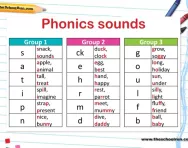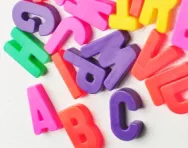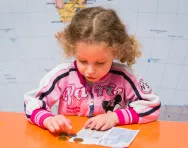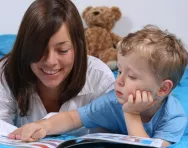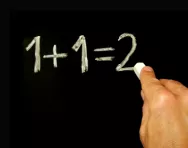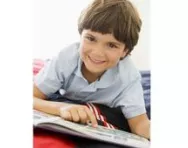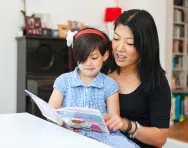TheSchoolRun.com closure date
As we informed you a few months ago, TheSchoolRun has had to make the difficult decision to close due to financial pressures and the company has now ceased trading. We had hoped to keep our content available through a partnership with another educational provider, but this provider has since withdrawn from the agreement.
As a result, we now have to permanently close TheSchoolRun.com. However, to give subscribers time to download any content they’d like to keep, we will keep the website open until 31st July 2025. After this date, the site will be taken down and there will be no further access to any resources. We strongly encourage you to download and save any resources you think you may want to use in the future.
In particular, we suggest downloading:
- Learning packs
- All the worksheets from the 11+ programme, if you are following this with your child
- Complete Learning Journey programmes (the packs below include all 40 worksheets for each programme)
You should already have received 16 primary school eBooks (worth £108.84) to download and keep. If you haven’t received these, please contact us at [email protected] before 31st July 2025, and we will send them to you.
We are very sorry that there is no way to continue offering access to resources and sincerely apologise for the inconvenience caused.
6 key areas for supporting your Reception child's learning
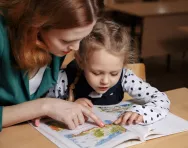
Your child's Reception year is all about learning through play and exploration, but while it may seem like all they do at school is potter about and play, they're absorbing knowledge through everything they do, from listening to stories to building junk models.
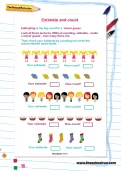
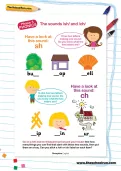
Start the Reception Learning Programme!
- Weekly maths & English worksheets direct to your inbox
- Follows the National Curriculum
- Keeps your child's learning on track
At home, you can support their learning through these simple but fun activities.
Reception English key area: reading and understanding
One of the most important things you can do with your child at home is read.
By the end of Reception most children are able to read and understand simple sentences. This supports children with more independent work in Year 1.
It doesn’t need to be school-type reading books, although this will still help. You can read anything and everything. Read stories to them, encourage them to read suitable books themselves, practise reading instructions, signs and posters. Show your child the joy of reading and discuss what you have read together. Ask questions about the stories they have enjoyed and see if they can retell the story in their own words.
If you prefer the structure of school reading schemes, Reading Chest is a book rental service specialising in reading scheme books for children aged 4 to 9 years, Oxford Owl has a free eBook online library, including some Biff and Kipper titles and non-fiction starter-reader titles, and the Teach your Child to Read eBooks from synthetic phonics expert Debbie Hepplewhite are currently available for free download.
Reception English key area: phonics
At school, your child will have a daily phonics lesson to help teach them the sounds that make up words. Phonics is taught in short, focused sessions and then embedded into other areas of learning.
In Reception, the initial focus is on the individual sounds of the letters. Once they have a good understanding of individual letter sounds, children move on to the sounds that groups of letters make (these are called digraphs and trigraphs; for example, qu, ch, and sh).
Phonics is divided into phases; these are groups of sounds and words that children learn in a certain order. Your child may very well know what phase they're working on at school (by the end of Reception most children will have completed phases 2-4).
There are numerous resources available to support phonics at home, including phonics apps, phonics tools and online games like Teach your Monster to Read and printable activities (TheSchoolRun has lots of phonics worksheets to download). Practising phonics at home will help your child develop vital reading and spelling skills throughout the school year.
Reception English key area: letter formation and writing skills
By the end of Reception, most children will be able to use phonics knowledge to write simple words and sentences.
In school, they take part in lots of different activities designed to improve fine motor control and finger strength and would also practise forming "letter families" of letters correctly to write simple words.
Activities such as playing with playdough, colouring and threading are great for developing finger strength and control.
Different schools have different policies when it comes to handwriting and letter formation, so it is important to try to help your child form practice letters in the way they're taught at school (the school is likely to send this information home so you can keep things consistent).
There are lots of printable and online letter formation activities available to help you: look through TheSchoolRun's patterning, letter formation and handwriting worksheets or select from our pick of the best handwriting apps.
Reception maths key area: counting, number recognition and ordering numbers 0-20
Being able to recognise, count and accurately order numbers 0-20 (and beyond if your child is more capable) will be of huge benefit to your child. A secure knowledge of numbers and counting will support them with mathematical problem-solving, not only in Year 1 but throughout school.
Numbers are all around us, so it is easy to incorporate number recognition and counting into daily life: try going on a number hunt, counting how many Lego bricks are in a tower and playing board games.
There are so many opportunities to work on number skills though play and daily life. Ask your child to tell you which number comes before 10 or after 16, and so on. Or why not make your own number line to 20 on Post-Its or pieces of paper and ask your child to help write the numbers and add the correct number of pictures?
Reception maths key area: solving simple number problems
By the end of Reception most children will be able to:
- Find one more / less than a given number
- Add and subtract (take away) two single-digit numbers (for example, 2 + 4 or 8 - 1) using quantities of objects and counting on or back to find answers
- Solve simple practical problems such as sharing, halving and doubling.
At home, allow children to explore problems practically and have objects such as counters or blocks available to help. (This concrete approach to maths is a key part of maths mastery teaching.)
Ask your child to help with activities such sharing out some strawberries fairly, cutting a pizza in half or doubling a given amount of sweets. Challenge your child to find one more / less than a given number or to make a tower with one or two more or fewer blocks.
Reception maths key area: shapes, measures and patterns
In addition to number work, in Reception maths children look at shape, space and measures, thinking about sizes and quantities, time, money, measuring and patterns.
They compare quantities and measures of objects and learn to use measurement terms like longer, shorter, more, fewer, tallest and shortest.
These aspects of maths can be explored in very practical ways.
Look for shapes in the house or environment, discuss what times of day you do certain things like going to bed or have breakfast, compare who has more/fewer grapes, look at the containers you have around the house and experiment to find out which container holds the most. Sort coins using size and shape and discuss value. Make patterns in pictures and see if your child can spot any around the house or in the garden.
Find lots more ideas in TheSchoolRun's Reception shape and space and Reception weights and measurements resources.
